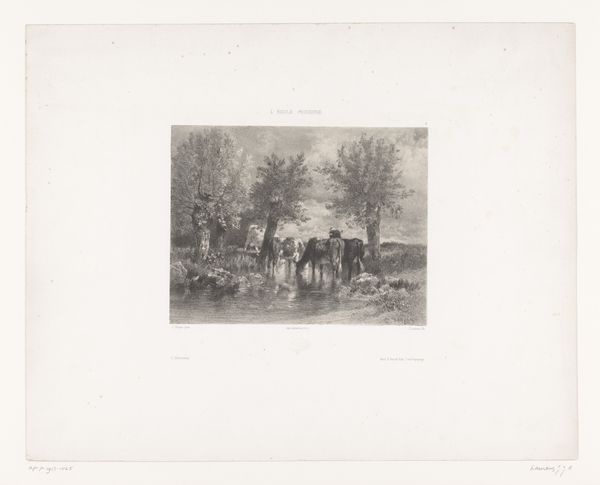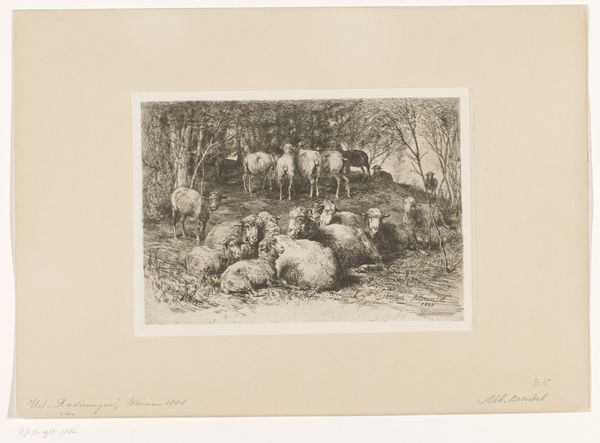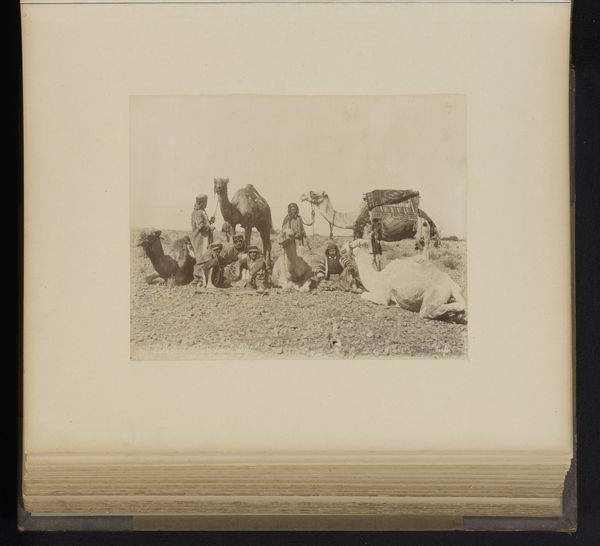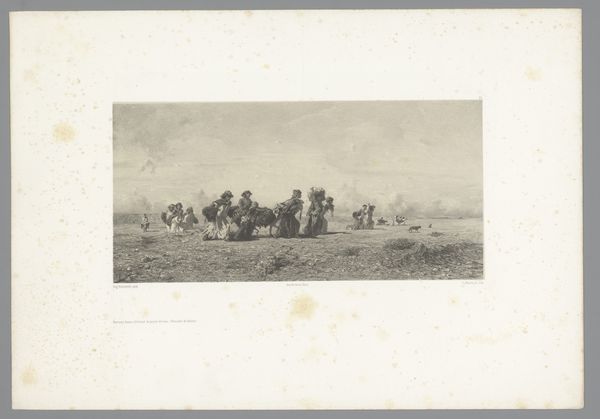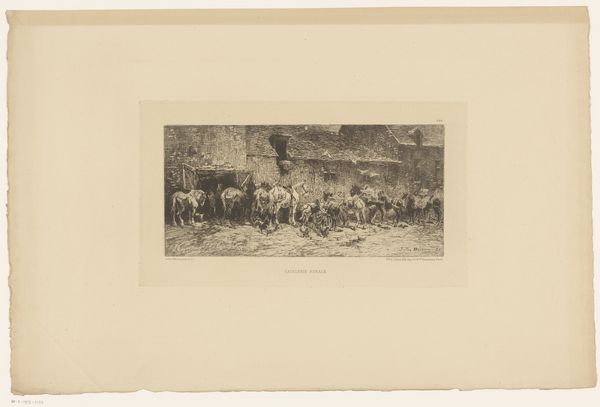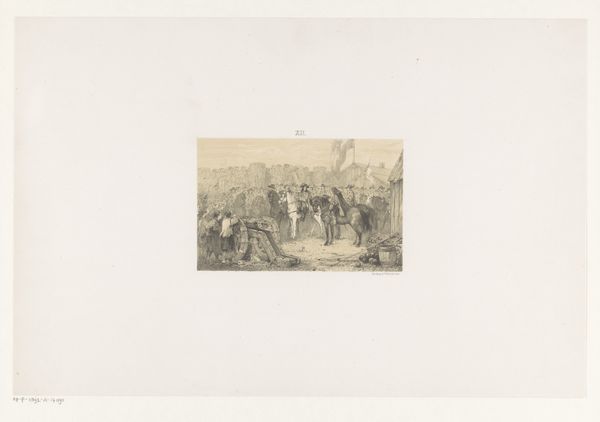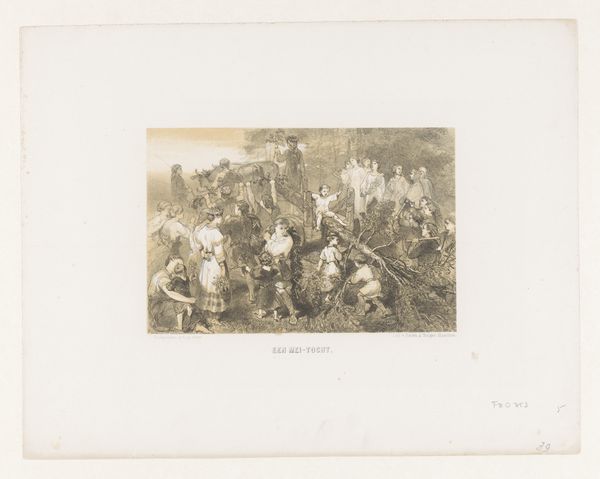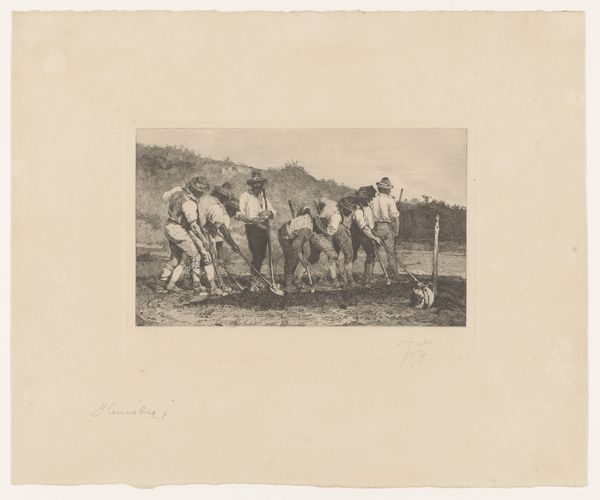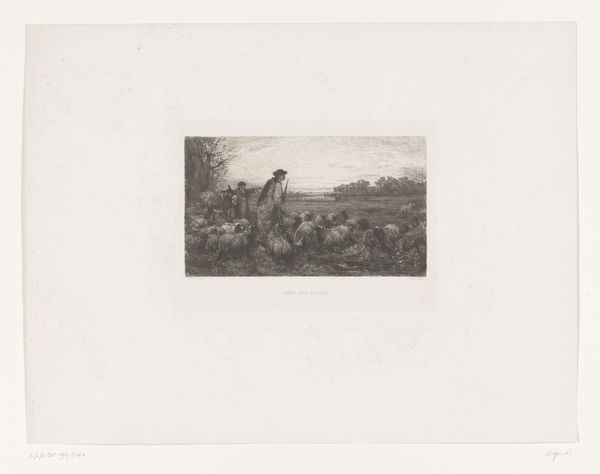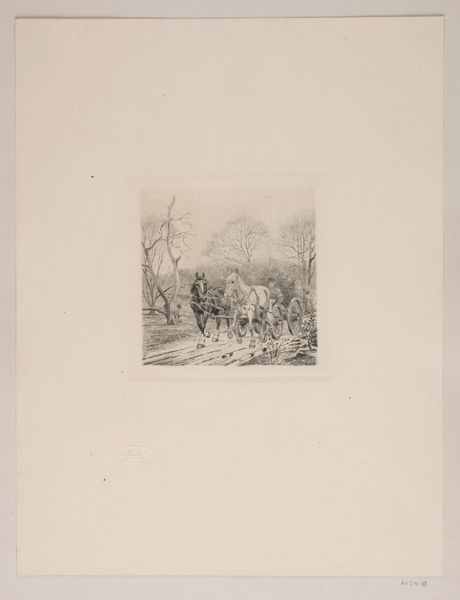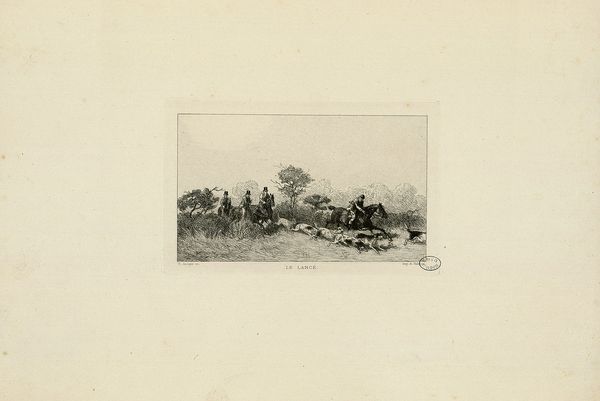
print, etching
#
16_19th-century
# print
#
etching
#
landscape
#
genre-painting
#
realism
Dimensions: height 145 mm, width 195 mm
Copyright: Rijks Museum: Open Domain
Editor: This etching, "Weide met kippen," or "Pasture with Chickens," by Armand Collard, dates to sometime between 1848 and 1909. It’s interesting – quite muted and sparse. The positioning of the chickens really creates a sense of depth within the scene. How do you approach a work like this from a formalist perspective? Curator: Certainly. Initially, my eye is drawn to the artist’s masterful use of line. Consider the subtle variations in weight and direction that delineate the forms of the chickens, as well as the branches of the trees. This interplay constructs not only form but also shadow and light within the scene, even without relying on other shading. Observe how Collard uses horizontal lines to establish the plane of the field, subtly contrasting with the more vertical marks that constitute the trees. Editor: So, you are concentrating more on the individual marks. What effect do they have when combined in this composition? Curator: Precisely. This repetition establishes rhythm and ultimately structure; it creates a network of interconnected lines. Notice also that the size and clustering of marks appear to define foreground versus background. What is remarkable, I think, is that the overall texture is so even, almost blurring the differences, even as it defines them. The even texture encourages us to interpret them as shapes with defined placement rather than objects within an implied, naturally representational space. Editor: It almost seems as if it were a collection of lines defining shape more than suggesting any kind of representation, like a form of abstraction! Curator: Exactly! Even though the individual marks combine to represent objects found in nature, they also exist on the two-dimensional plane, interacting through linear elements more than as stand-alone representations. Now, does our analysis invite a consideration of abstraction even in realism? Editor: Absolutely. Viewing the composition as shapes gives us a better understanding and provides an interesting perspective on realism and naturalism, as applied to art from this period! Curator: Indeed. By deconstructing the image into its basic components, we discover that its meaning is created by relationships and structural dynamics.
Comments
No comments
Be the first to comment and join the conversation on the ultimate creative platform.

